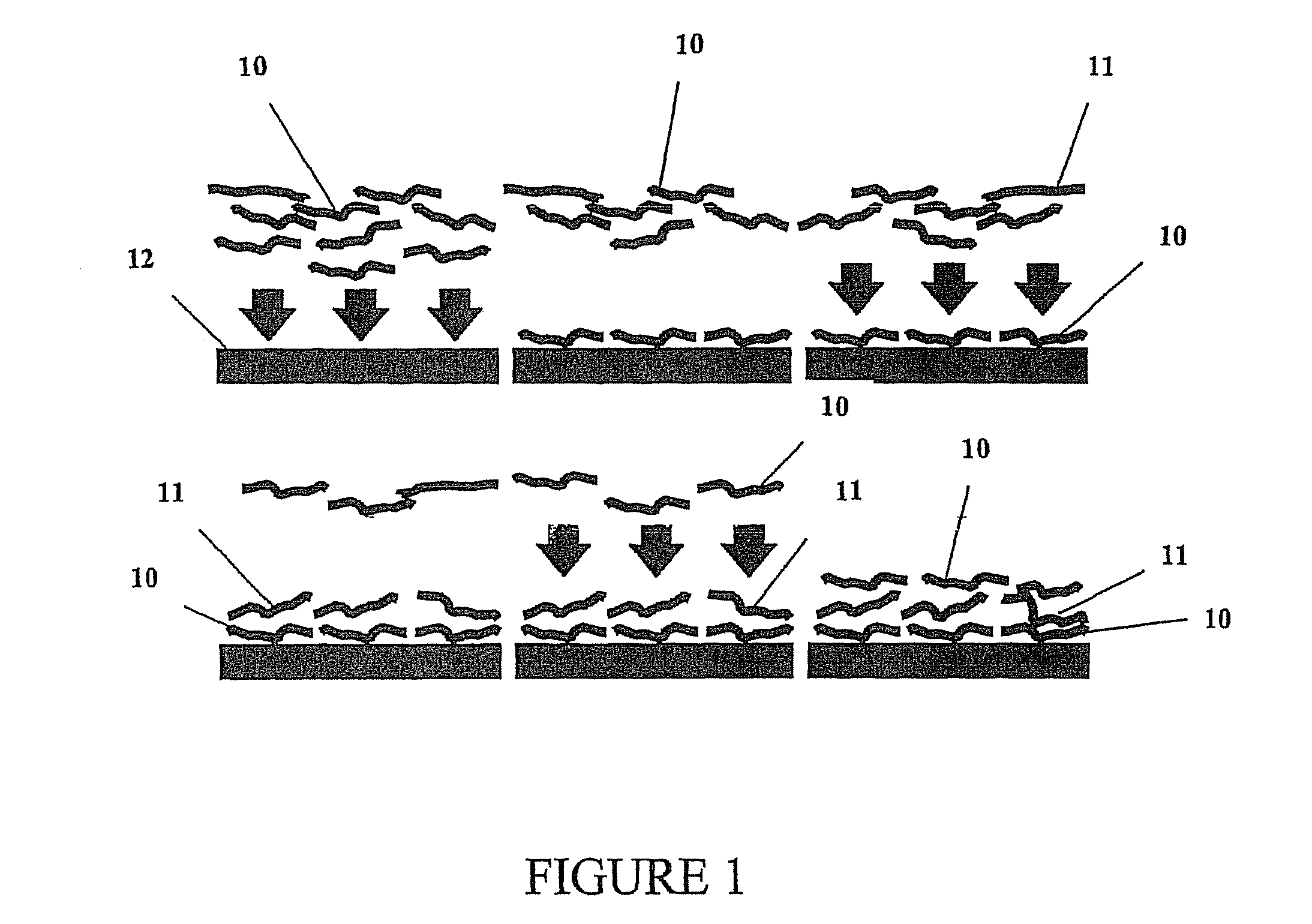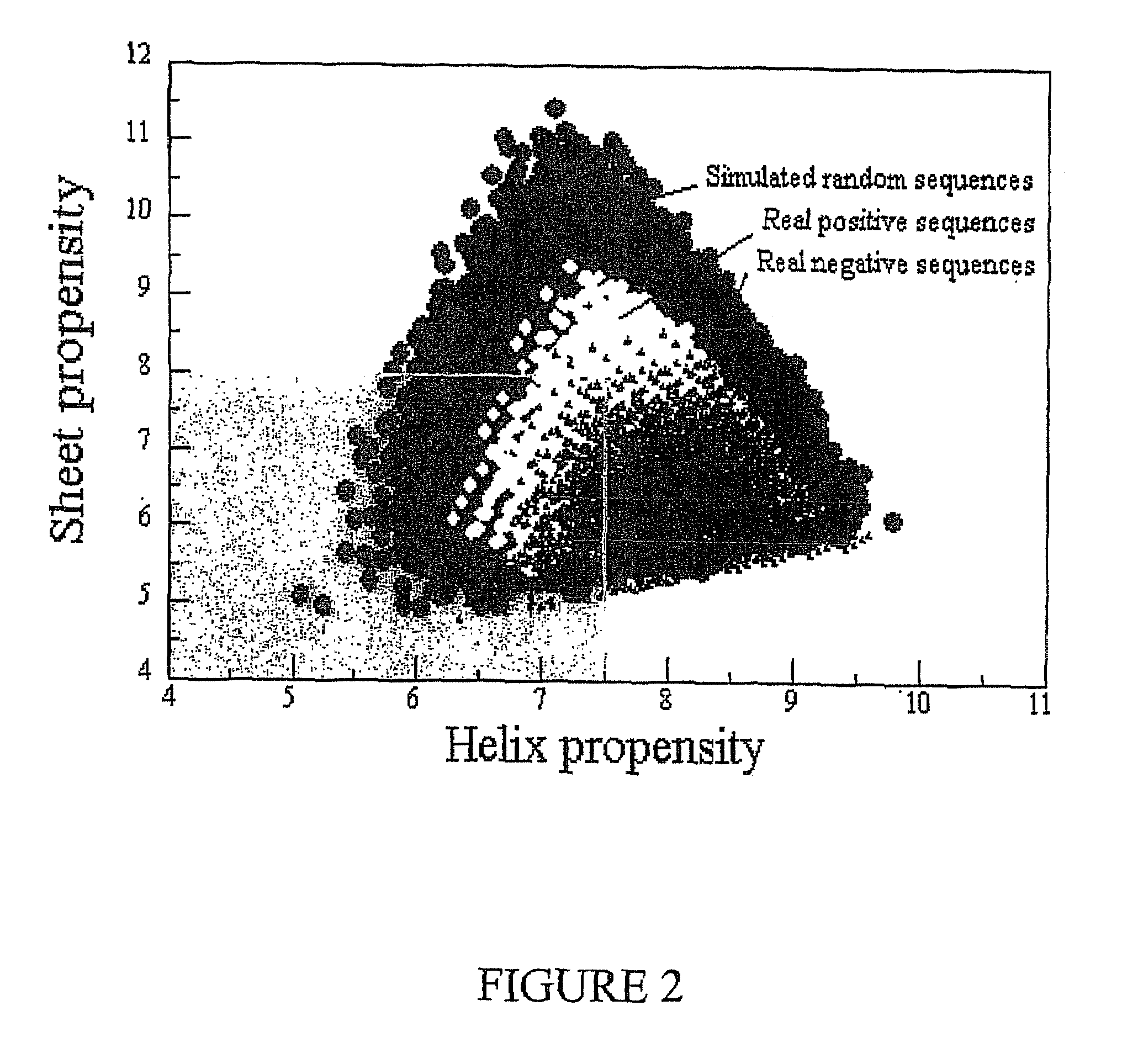Multilayer films, coatings, and microcapsules comprising polypeptides
a polypeptide and multi-layer technology, applied in the direction of peptides, microcapsules, prosthesis, etc., can solve the problems of limited control, difficulty in using proteins for this purpose, and material in general usefulness for biomedical applications
- Summary
- Abstract
- Description
- Claims
- Application Information
AI Technical Summary
Benefits of technology
Problems solved by technology
Method used
Image
Examples
example 1
1. EXAMPLE 1
Design of Polypeptides Based on Human Blood Protein Sequences and their Use in Polypeptide Film Fabrication
[0125]For this work, amino acid sequences were selected using the process described in Part VII(B)(1) above to identify sequence motifs in the primary structure of human blood proteins: Complement C3 (gi|68766) was the source of the anionic sequence motifs, and lactotransferrin (gi|4505043) the source of the cationic sequence motifs. As discussed above, blood protein sequences were used to minimize the immune response of patients into whom devices involving the polypeptides might be introduced (including, e.g. artificial red blood cells). In principle, this approach should be applicable for any organism having an immune system; it is not limited to humans. Polypeptides were synthesized by SynPep Corp. (Dublin, Calif.). The polypeptide sequences were:
[0126]
(SEQ ID NO:2)Tyr Glu Glu Asp Glu Cys Gln Asp Gly Glu Glu AspGlu Cys Gln Asp Gly Glu Glu Asp Glu Cys Gln AspGly G...
example 2
2. EXAMPLE 2
Experiments Involving De Novo-Designed Polypeptides Containing Cysteine
[0145]a. Polypeptides
[0146]The polypeptides used were:
[0147]
(SEQ ID NO:5)Tyr Lys Cys Lys Gly Lys Val Lys Val Lys Cys LysGly Lys Val Lys Val Lys Cys Lys Gly Lys Val LysVal Lys Cys Lys Gly Lys Val Lys(SEQ ID NO:6)Tyr Glu Cys Glu Gly Glu Val Glu Val Glu Cys GluGly Glu Val Glu Val Glu Cys Glu Gly Glu Val GluVal Glu Cys Glu Gly Glu Val Glu
Unlike the other polypeptides used in the experiments described herein, these two were not designed using human genome information; they were designed de novo for the sole purpose of assessing the role of disulfide bond formation in polypeptide film stabilization. SEQ ID NO:5 has a balance of charge of 16 / 32 (0.5) at pH 7; and SEQ ID NO:6 has a balance of charge of 16 / 32 (0.5) at pH 7. In both cases, the balance of charge is greater than or equal to approximately one-half of the total length of the first layer polypeptide at pH 7.
Procedures
[0148]All experiments were condu...
example 3
3. EXAMPLE 3
Experiments Involving Designed Polypeptides Containing Cysteine
[0157]a. Materials
[0158]The essential elements of this experiment were a quartz crystal microbalance instrument; silver-coated resonators (9 MHz resonant frequency); the negative 48-residue peptide (LN3) (SEQ ID NO: 4); and a positive 48-residue peptide named “SP5” of the following sequence:
[0159]
(SEQ ID NO:7)Tyr Lys Gly Lys Lys Ser Cys His Gly Lys Gly LysLys Ser Cys His Gly Lys Gly Lys Lys Ser Cys HisGly Lys Gly Lys Lys Ser Cys His
[0160]Like the other designed peptides discussed above in Part VII(E)(1), SP5 was designed using the process described above in Part VII(B)(1) to analyze the amino acid sequence of the human blood protein lactotransferrin (gi|4505043). The ELBL buffer was 10 mM Tris, pH 7.4, 10 mM NaCl, and 1 mM DTT. The disassembly buffer was 10 mM KCl, pH 2. 2 mL peptide solutions were prepared for SP5 and LN3 by adding 4 mg of each peptide to 2 mL of the above buffer solution and adjusting the p...
PUM
| Property | Measurement | Unit |
|---|---|---|
| pH | aaaaa | aaaaa |
| thickness | aaaaa | aaaaa |
| thickness | aaaaa | aaaaa |
Abstract
Description
Claims
Application Information
 Login to View More
Login to View More - R&D
- Intellectual Property
- Life Sciences
- Materials
- Tech Scout
- Unparalleled Data Quality
- Higher Quality Content
- 60% Fewer Hallucinations
Browse by: Latest US Patents, China's latest patents, Technical Efficacy Thesaurus, Application Domain, Technology Topic, Popular Technical Reports.
© 2025 PatSnap. All rights reserved.Legal|Privacy policy|Modern Slavery Act Transparency Statement|Sitemap|About US| Contact US: help@patsnap.com



